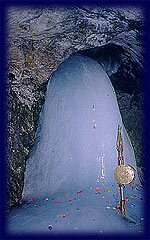Wednesday 20 July 2011
Amarnath Yatra: History of Travel,Why people travel , Hot Travel H...
Amarnath Yatra: History of Travel,Why people travel , Hot Travel H...: "Ever notice how when you sit still for a few hours without moving, you suddenly get up and find your legs are cramped, or asleep, or fee..."
History of Travel,Why people travel , Hot Travel History , Popular Travel History , Travel
That’s because they’re not meant to be still…at least not for long. We’re meant to move. Our limbs have to be in motion almost constantly.
Humans have always been on the move. Our skeletons and muscle structures have evolved to facilitate gathering our food, escaping from predators, and to satisfy our animal curiosity.
As our brains grew larger, so did our inquisitiveness, and driven by different reasons, humans began to travel.
The Early Explorers
In the Neolithic age we saw the first sailing vessels and the invention of the wheel, both designed to move us around in different ways.
Nomadic hunters and gatherers moved in search of food following seasonally available wild plants and game.
Nomadic hunters and gatherers moved in search of food following seasonally available wild plants and game.
Then Ancient man began to build roads to facilitate the movement of troops through empires, and eventually civilians began to travel in caravans. Travel for the purpose of commerce and trade took explorers to strange lands to meet other people, and bring back riches of unfathomable value.
Wealthy Greeks and Romans began to travel for leisure to their summer homes and villas by the sea in cities like Pompeii and Baiae.
The freedom of travel in the Roman Empire brought many Jews to flourishing cities of the ancient world, and Jesus himself is thought to have traveled a great deal with his disciples.
We know that Vikings had a particular skill for sailing and a keen interest in exploring. Through perilous voyages they conquered areas such as Iceland and Greenland, and were even the first to accidentally discover America in 985 A.D, when a ship was blown off course on the way to Greenland.
In 1001, Leif Eriksson sailed back to explore it further and called it Vinland, or ‘land of pastures’.
Enter the Dark Ages
 In Medieval times, the most notorious travelers were pilgrims and missionaries. Driven by their religious convictions, pilgrims made dangerous journeys to places like Santiago de Compostela, Canterbury, and Jerusalem while missionaries traveled to heathen areas to evangelize the people, such as the Celts in Ireland.
In Medieval times, the most notorious travelers were pilgrims and missionaries. Driven by their religious convictions, pilgrims made dangerous journeys to places like Santiago de Compostela, Canterbury, and Jerusalem while missionaries traveled to heathen areas to evangelize the people, such as the Celts in Ireland.In the late 16th century it became fashionable for young aristocrats and wealthy upper class men to travel to important European cities as a crowning touch to their education in the arts and literature, designed to enlighten Europe’s young elite.
ravel was no longer limited only to the privileged as it became cheaper, easier, and safer to travel. Young ladies began to travel too, chaperoned by an old spinster as was appropriate, as part of their education.
Steam and Steel
The Industrial Revolution brought leisure travel to Europe.
The new middle class now had the time to travel thanks to industrialized production with efficient and faster machinery.
The new middle class, comprised of factory owners and managers, now had the time to travel thanks to industrialized production with efficient and faster machinery. They had more money and more time to relax and take part in recreational activities.
For the first time ever, traveling was done for the sole pleasure of it.
The Modern Age
Affordable air travel soon contributed to international mass tourism, pretty much as we know it today.
The Grand Tourists of the 17th and 18th centuries echo today of the hoards of backpackers and gap-year students who, not content with traveling through one continent, do so throughout the entire world.
Much like the young European aristocrats of the time, we today also consider traveling as a rite of passage, an initiation, a transition, an opportunity for soul searching.
With tourism currents like Eco-travel, Ethical Travel, Volunteering, Mystical tourism, Dark Tourism, Pop-Culture tourism, Cosmetic Surgery tourism, and Independent traveling, the travel industry has reached an apogee never before seen.
So when we wonder why we travel, and where it all started, it might be comforting to think about our predecessors, and how they moved first out of necessity, then for religion, migration, emigration, commerce, enlightenment and finally for pleasure.
Today each of our personal reasons may vary, but one thing is certain: there will never be rest for a species that can only move, move and keep moving.
Saturday 9 July 2011
Amarnath Yatra: Amarnath Katha , Katha of Amarnath
Amarnath Yatra: Amarnath Katha , Katha of Amarnath: "Amarnath Katha There is famous Rigvedic Verse that says 'Ekam Sat ' that is 'There is one Being ,the sages call Him by many names.' The God..."
Amarnath Katha , Katha of Amarnath
There is famous Rigvedic Verse that says "Ekam Sat " that is "There is one Being ,the sages call Him by many names." The God (Parmeshwar) has three deities who carry on the world .This is Known as Holy Trinity. Brahma- the creator, Vishnu - the perpetuator of life and Shiva (Mahesh ) -the purifier and perpetuator of good and destroyer of evil. Rig Veda refer Shiva as Rudra as in its following verse . "We Worship Tryambaka (Rudra) , Who spread Fragrance and Increases Nourishment , May He release me ,like the cucumber from its stem , From Mortal Life , But not From Immorality . "(Rig Veda Mandal VII Sukta 59 and Mantra 12)
The Yajurveda describes Shiva as ascetic warrior Whose robe is of Deer Skin and He carries Trishul .
According to the verse Satyam, Shivam ,Sundaram ,the life is described as having three facets Truth (Satyam), Good (Shivam) and the Beautiful (Sundaram).
According to the verse Satyam, Shivam ,Sundaram ,the life is described as having three facets Truth (Satyam), Good (Shivam) and the Beautiful (Sundaram).
Shiva is a living God. The most Sacred and ancient books of India
This is The Cave which was chosen by Bhole Shankar for narrating the secrets of immortality and creation of Universe to Maa Parvati ji . The story goes like this . Centuries ago Maa Parvati asked Shiv ji to let her know why and when He started wearing the beads of heads ( Mund Mala) . Bhole Shankar replied when ever you are born I add one more head in my beads . Maa Parvati said ," My Lord, my body is destroyed every time and I die again and again, but you are Immortal. Please let me know the secret of this ." Bhole Shankar replied that it is due to Amar Katha ."
Many pilgrims report seeing the pair of pigeons when they trek the arduous route to pay their obeisance before the Ice-Lingam (the phallic symbol of Shiva).
Discovery of Holy Cave
The ancient epics narrate an other story which goes like this. The valley of Kashmir Holy Cave
The trek to Amarnath, in the month of sharavan ( July–August) has the devout flock to this incredible shrine, where the image of Shiva, in the form of a Lingam, is formed naturally of an Ice Stalagmite, which waxes and wanes with the Moon's cycle . By its side are fascinating, two more Ice Lingams, that of Maa Parvati and of their son, Ganesha .
The trek to Amarnath, in the month of sharavan ( July–August) has the devout flock to this incredible shrine, where the image of Shiva, in the form of a Lingam, is formed naturally of an Ice Stalagmite, which waxes and wanes with the Moon's cycle . By its side are fascinating, two more Ice Lingams, that of Maa Parvati and of their son, Ganesha .
Amarnath Yatra: Amarnathji Yatra - a journey into faith , Holy Ama...
Amarnath Yatra: Amarnathji Yatra - a journey into faith , Holy Ama...: "Amarnathji Yatra - a journey into faith 'The Himalayan pilgrimages are the oldest organised travel system, evolved over time by Hindu sage..."
Amarnath Yatra: Amarnathji Yatra - a journey into faith , Holy Ama...
Amarnath Yatra: Amarnathji Yatra - a journey into faith , Holy Ama...: "Amarnathji Yatra - a journey into faith 'The Himalayan pilgrimages are the oldest organised travel system, evolved over time by Hindu sage..."
Amarnathji Yatra - a journey into faith , Holy Amarnath Yatra
"The Himalayan pilgrimages are the oldest organised travel system, evolved over time by Hindu sages and embodying the spirit of wander, adventure and spirituality"
One of the holy trinity, Shiva is a living god. The most ancient and sacred book of India, the Rig Veda evokes his presence in its hymns. Vedic myths, ritual and even astronomy testify to his existence from the dawn of time.
Shiva is known to have made his home in the Himalayas. He built no house nor shelter, not for himself or his bride. He was an ascetic, and yet married; he could be both for "he was the wild god sporting in the forest or taking his ease on a cloud."
The trek to Amarnathji, in the month of Shravan (July - August) has the devout flock to this incredible shrine, where the image of Shiva, in the form of a lingam, is formed naturally of an ice - stalagmite, and which waxes and wanes with the moon. By its side are, fascinatingly, two more ice - lingams, that of Parvati and of their son, Ganesha.
According to an ancient tale, there was once a Muslim shepherd named Buta Malik who was given a sack of coal by a sadhu. Upon reaching home he discovered that the sack, in fact, contained gold. Overjoyed and overcome, Buta Malik rushed back to look for the sadhu and thank him, but on the spot of their meeting discovered a cave, and eventually this became a place of pilgrimage for all believers. To date, a percentage of the donations made by pilgrims are given to the descendants of Malik, and the remaining to the trust which manages the shrine.
Whatever the legends and the history of Amarnathji's discovery, it is today a very important centre of pilgrimage and though the route is as difficult to negotiate as it is exciting, every year, thousands of devotees come to pay homage before Shiva in one of his famous Himalayan abodes.
Situated in a narrow gorge at the farther end of Lidder valley, Amarnathji stands at 3,888 m and is 45 km from Pahalgam and 141 km from Srinagar. Though the original pilgrimage subscribes that the yatra be undertaken from Srinagar, the more common practice is to begin the journey from Pahalgam, and cover the distance to Amarnathji and back in four or five days. Pahalgam is 96 km from Srinagar.
Subscribe to:
Posts (Atom)




